Incorporating a new optical design for the shorter register of mirrorless cameras, the Sigma 50mm F1.4 DG DN Art is a high-grade, fast standard lens for the Sony FE-mount. The optical construction used is complex for a standard 50mm and features 14 elements in 11 groups, with three aspherical lenses, and one SLD (Super-Low Dispersion) glass element. The SLD element helps mitigate chromatic aberration while the aspherical surfaces reduce coma flare, spherical aberration, and field curvature.
Interestingly, the double-sided aspherical is adopted by the focusing group, which reduces the number of elements used there, and, it is claimed, helps response times and enhances AF-tracking performance. This is aided by a new linear focusing motor using internal focusing, which is said to offer fast, accurate and near-silent operation. The minimum focus distance is a typical 0.45 m (1.48 ft) for this focal length.
In keeping with the high-grade status, the new lens features 11 aperture blades, a robust but compact design, and a dust and splash-resistant structure. Sigma’s proprietary Super Multi-Layer Coating is used to reduce ghosting and flare, plus there’s a water- and oil-resistant coating on the front element. Cosmetically similar to the DSLR version, the new mirrorless lens now features a large aperture ring that is adjustable in one-third stops and has a built-in locking and de-clicking option. Depending on the camera model, an AF lock button can be reconfigured to operate different functions.
With a 72mm filter thread, and weighing 670 grams (23.6 oz.), the lens is around two-thirds the size and weight of the original DSLR version. The new mirrorless lens is available now for around $849 / €949.
You can view the results for all tested lenses and create your own comparisons and in-depth analyses using our interactive image lens comparison tool.
Key specifications:
- 14 elements in 11 groups
- One SLD (Super-Low Dispersion), one double-sided aspherical and one aspherical element
- 11-blade, rounded aperture
- Single HLA (High-response Linear Actuator) AF motor
- Internal Focusing (no extending barrel)
- 72mm filter thread
- Minimum focus distance: 45 cm (17.7 in)
- Weight: 670 grams (23.6 oz.)
Test results
The Sigma 50mm F1.4 DG DN Art was tested on a 60 MP Sony A7R IV and achieved a DXOMARK score of 55 — the highest score so far in our database for system image quality.
Like most modern complex designs, the Sigma 50mm F1.4 DG DN Art is optimized for high image quality at and close to the initial aperture with only small sharpness gains made when approaching F5.6. Standout qualities include excellent uniformity from the initial aperture and excellent transmission measured at T1.5, just 0.2 EV below the stated aperture value.
Somewhat unusually, the lens has fairly noticeable pincushion-type distortion (-0.5%), and vignetting is quite high for a modern design, up to -2.3 EV in the corners at maximum aperture. There’s some slight lateral chromatic aberration, though this is low (3 µm) and easily corrected in post-processing.
Overall, the Sigma 50mm F1.4 DG DN Art delivers excellent image quality. As always, it is worth looking through the detailed results and comparing them with rival designs to get a clearer idea of the image quality.
In-depth comparisons
Sigma’s Art series lenses were originally designed for the DSLR, but the new DG DN Art models have seen a complete redesign of the optical construction to take account of the shorter register of mirrorless cameras. So we’ve compared this new lens with the highly regarded original, the Sigma 50mm F1.4 DG HSM Art on a 45.7 MP Nikon D850, the highest-resolution Nikon DSLR body. At around $950 at the time of launch, some nine years ago now, the new mirrorless version actually has a lower list price. We’ve also compared the new mirrorless Sigma with a rival, the high-end Sony Zeiss Planar T* FE 50mm 1.4 ZA. At $1499 at launch, the Sony-made Zeiss lens was introduced in 2016.
You can see an overview of this comparison in our database.
Sharpness
Like so many modern designs, particular attention has been paid to sharpness at the maximum aperture with the Sigma DG DN. But it is not just sharpness at the center that is a high point, uniformity is also excellent across the field, right into the corners. Sharpness levels improve slightly at each progressive smaller stop to F5.6 where some mild effects of diffraction start to be seen. Stopping down further successively reduces sharpness levels due to diffraction, but at least levels were high to begin with. Sharpness is still excellent at F8, but there is a noticeable lowering by F11 and at F16. Importantly though, excellent uniformity across the field is maintained throughout.
When contrasting this performance with the made-for-DSLR Sigma DG HSM model and the even older Sony-made Zeiss, it is clear to see how designs have changed. The two older lenses have high central sharpness at F1.4, but edge performance is behind the latest design and is particularly noticeable with the oldest of the three, the Sony-made Zeiss. While that lens has the highest peak sharpness, that and the Sigma DG HSM also have some slight astigmatism. Stopped down performance of the Sigma DG HSM and the Sony-made Zeiss is impressive though, with all three performing similarly in sharpness from F2.8.
Chromatic aberration
Color fringing is exceptionally low on the new lens, with it being less than 2 µm microns wide at F1.4 at its most significant, which is to say far away from the center (0 field position on the graph, below) and mostly in the corners (80-100% field position). As the profile is mostly linear, it is easy to correct, either in-camera or in post. The highest levels measure around 3 µm at its peak, which is very low. Sigma’s made-for-DSLR DG HSM model has the highest measured levels culminating at 9 µm, but it is pretty consistent through the aperture range, and the profile is predictable with it being mostly noticeable in the extreme corners. The Sony-made Zeiss also performs well with fringing maxing at 7 µm in the corners mostly.
Geometric distortion
One concession to the reduced size of the new Sigma 50mm F1.4 DG Art appears to be the presence of pincushion distortion. This type of distortion is usually found at longer focal lengths and has the opposing effect of barrel distortion, that is to say the corners of the projected image extend outwards instead of inwards. Measured at -0.5%, levels are not high, but it is still somewhat unusual at this focal length. The Sigma DG HSM also has some, but at -0.1 %, it is negligible, and the same can be said of the Sony Zeiss lens, which has the same level of barreling (+0.1%).
Vignetting (corner shading)
Fast lenses like this typically have more vignetting than slower lenses, but advances have been made in this area with high-speed modern designs. However, the Sigma DG HSM exhibits slightly higher levels than we would expect, but given the diminutive dimensions, it is perhaps another concession. Vignetting reaches a maximum at -2.3EV in the extreme corners wide open, but the visual effect is exacerbated by a smaller-than-usual bright central core. Vignetting falls away slowly upon stopping down as well and never clears away entirely. In many respects, the older lens of the three the Sony-made Zeiss performs similarly but the Sigma DG HSM has lower levels to start with, and the effects are mitigated completely by F2.8.
Transmission
It might be the smallest of the three F1.4 lenses in this comparison, but in terms of brightness, it is the fastest. The new lens measured T1.5 in our lab, which is just -0.3 EV below the claimed F1.4 maximum aperture value. The older Sigma 50mm F1.4 DG HSM and the Sony-made Zeiss Planar T* FE 50mm F1.4 ZA both measured T1.8, some -0.7 EV apart from the maximum aperture value or F number, which is quite significant. While it is not usually an issue for stills where the camera’s TTL meter compensates for the difference, knowing the actual lens speed can be significant if it is to be used in filming, where the use of an external meter is common, or if the lens is chosen specifically for low-light scenes.
Conclusion
When Sigma introduced the Art series for DSLRs, it heralded a change in the standing of that relatively small independent lens maker, and it’s not an exaggeration to say that the series had a profound effect on the market and subsequently on the camera makers’ offerings. The new made-for-mirrorless Sigma 50mm F1.4 DG DN Art series lens takes the optical excellence of the original Art series to new heights. The lens has a superb balance of imaging performance. It has high sharpness levels with excellent uniformity and few real concessions in a relatively small package. The Sigma 50mm F1.4 DG DN Art also has a highly competitive price. With so many 50mm lenses available for the Sony FE mount, the new Sigma 50mm F1.4 DG DN Art series looks like a highly compelling choice.
In this review, we have compared the Sigma 50mm F1.4 DG DN Art mounted on a Sony A7R IV to its closest rivals from other brands. Remember that the lenses may be used on various cameras with different sensors, or in some cases on different camera systems using different mounts, so the results will vary between them.
As usual, you can create your own comparisons and in-depth analyses using our interactive image lens comparison tool.


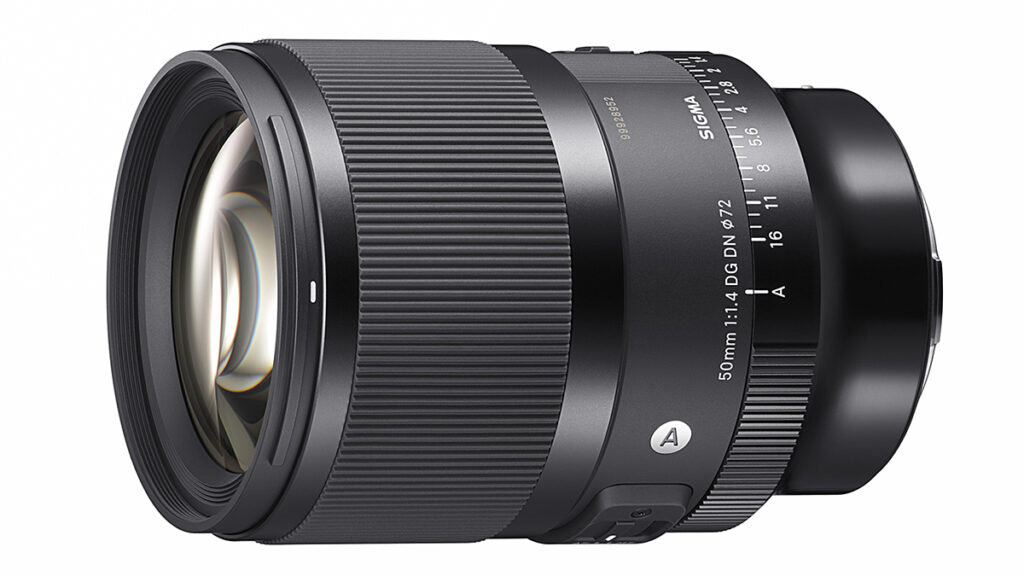


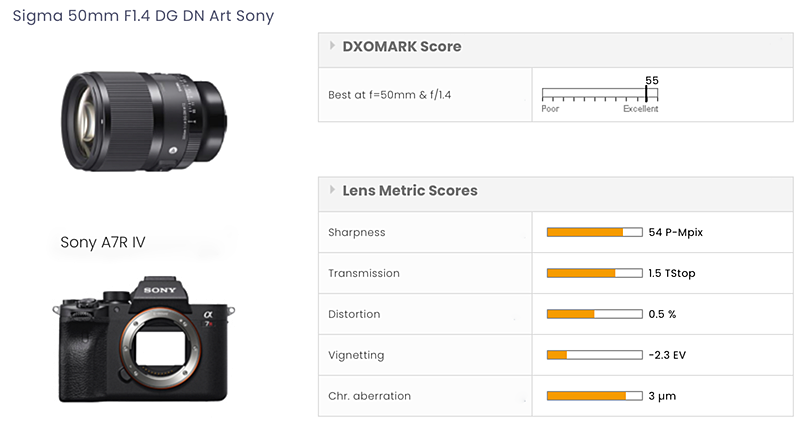

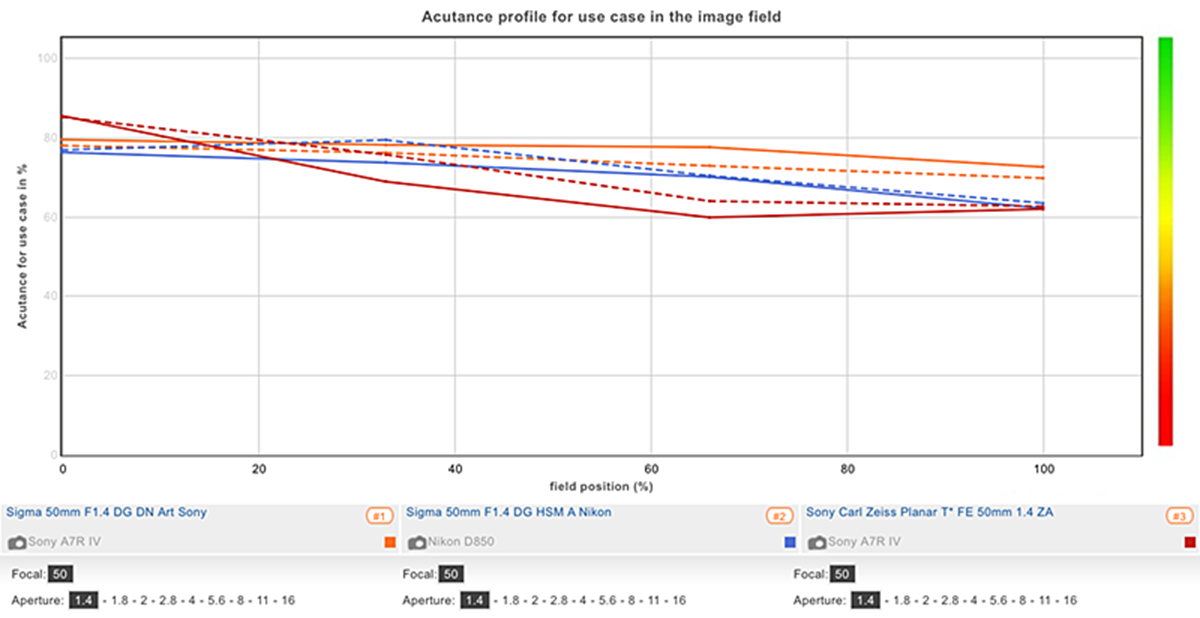
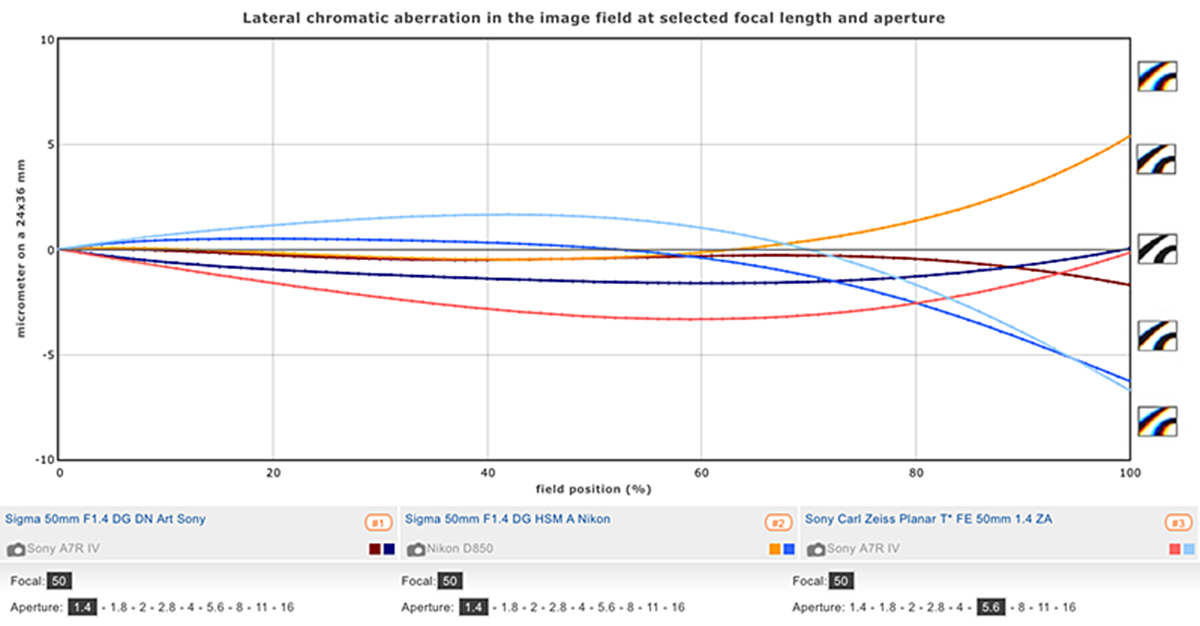
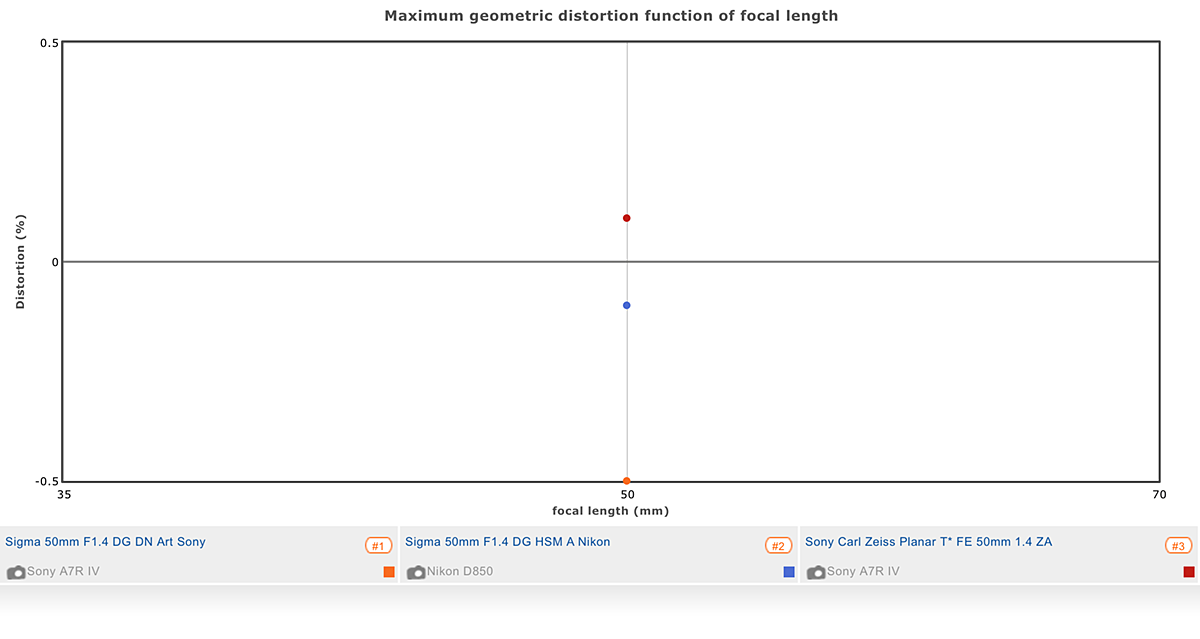
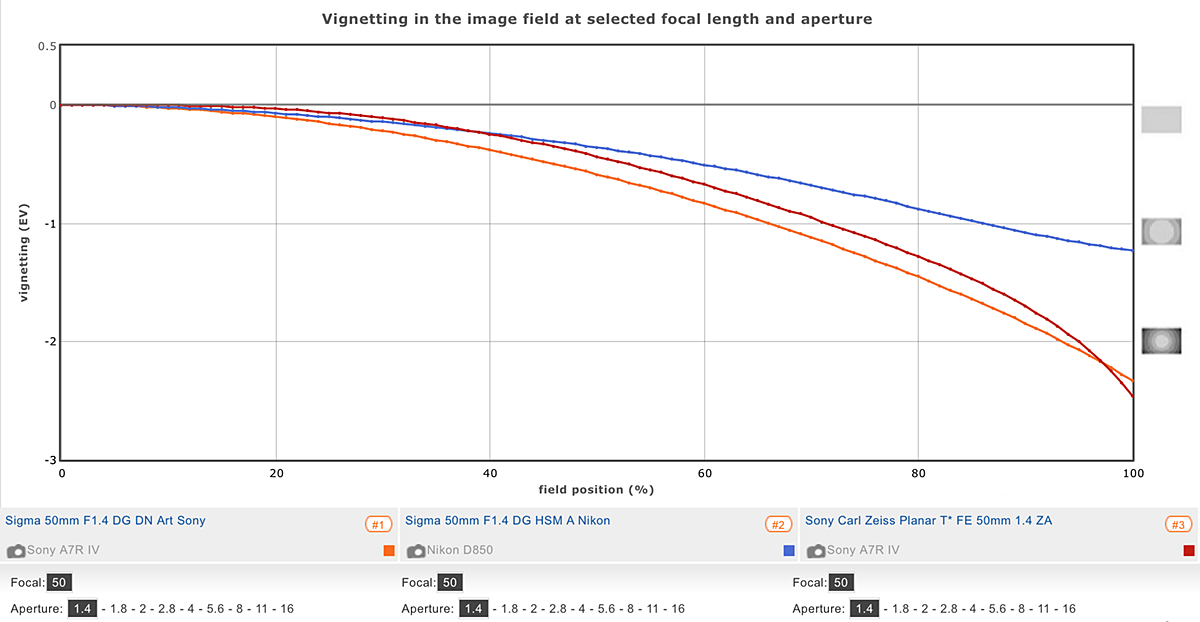
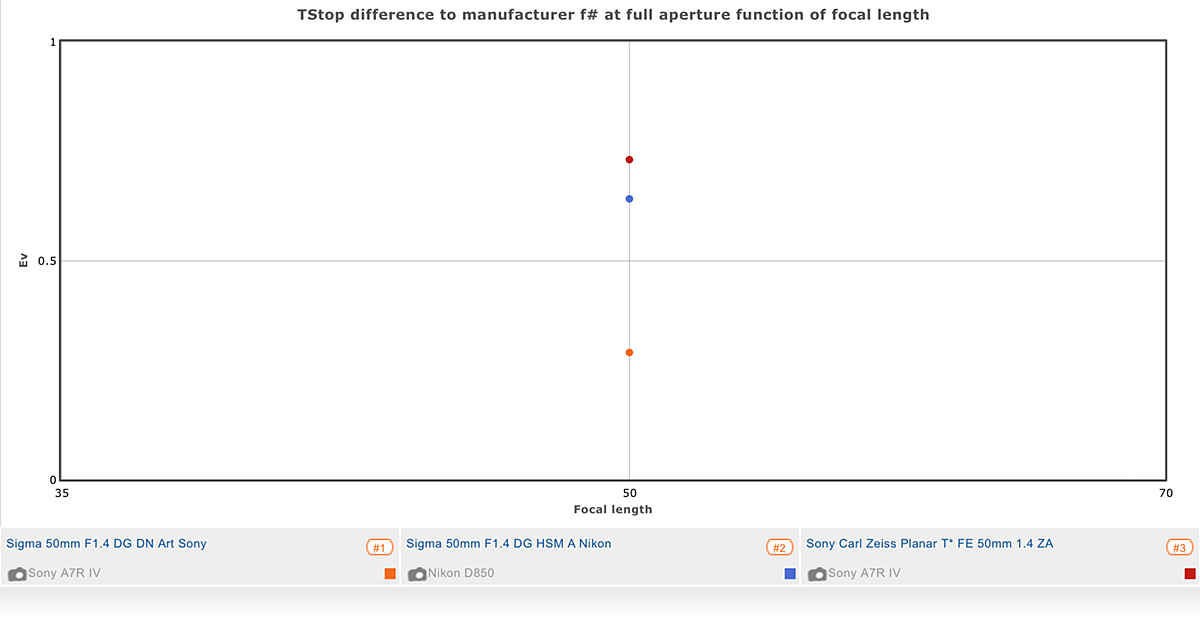
DXOMARK encourages its readers to share comments on the articles. To read or post comments, Disqus cookies are required. Change your Cookies Preferences and read more about our Comment Policy.